Gardeners pay special attention to cultures that bloom very early. With their help, the garden comes to life with the arrival of spring, when other flowers are still sleeping. If you are just going to get a start-up color, pay attention to the white gallery. Some of his varieties are actively blooming in April, but there are summer varieties. Therefore, the whitewash can please his bloom throughout the season. It will harmoniously fit into any garden composition, decorate the Rabatka or low alpinary, will make a highlight to an artificial reservoir. But the main heritage of this culture is unpretentiousness in cultivation, therefore, they do not have to apply special efforts to land and further care.
Whiteller, cultural description
The white studio, Leukoum or White Violet - the plant of the family of amarantic, originally from the countries of Central Europe, Turkey, as well as Mediterranean, Iran. In the natural environment, it is widespread in the forests, on mountain slopes, and, of course, meadows. His name of Greek origin and happened from Leucos - milk, snow-white and Ion - violet.
The white studio is a grassy plant for an open soil, which is grown relatively recently in culture. If you walk in the forest in the first spring days, you can meet these reverent plants on protaly. Wholesalers grow friendly pieces, their white flowers with yellow-green peas on petals. The white color is so great that this beauty is simply impossible to get around, so it quickly turned into popular garden flowers from wild forest culture.
- The white student refers to bulbous plants. Its bulb consists of a variety of closed scales of brown or light green. The size of the bulbs is up to 5 cm in height, and 3-4 cm in the diameter. The roots are durable, every few years die with a part of the Donette, from which they grew up, and they grow new ones.
- The foliage in the white hair bar. Spring varieties it grows together with flowers.
- Depending on the type, the white gallery can grow up to 40 cm height. Flowers culture in early spring or summer, often before autumn. Blossom lasts about 30 days.
- White flowers are very fragrant. There are single, gracefully drooped under their weight, or collected several pieces in umbrella inflorescences. Flowers in diameter no more than 3 cm, their color is milky white or pale pink with characteristic yellow-green spots at the top of each petal. The perianth at the leopomum is wide-rolled, formed out of six leaflets.
- Leucoum fruit is a fleshy box with black or brown seeds of oval shape.
Whiteller, species and varieties
Leucheum in gardening is represented by two species - summer (Leucojum Aestivum) and Spring (Leucojum Vernum). Due to its exquisite natural beauty, the breeders did not have to make special efforts, so this plant varieties are not so much.
Spring sealer prefers mountain slopes of Central Europe. It is distinguished by early blossom: in the first April days, the whitewasher produces flowers growing up to 25 cm with height. Flowers are mostly growing in pairs, but can be solitary. They are milk color with bright-salad labels on the petals. Blossom lasts 25 days.
Famous grade of spring leopoma - carpathic. This white exchanger, buds are much more than at his wild relative, more fragrant fragrance, and stains on bright yellow petals. In a cut, culture retains freshness up to 10 days.
Summer sealer is widely distributed in Western Europe, Malaya Asia, in the Mediterranean. This species prefers wet soil, so it grows along the rivers and on the filler fields. Releases high bloom (more than 40 cm in height), on which umbrella inflorescences consist of 3-8 flowers. Blossom begins in the second decade of May and lasts 20-25 days.
Beautiful summer grade of a white studio - Gravetye Giant. This is a tall whitewash, whose stalks are pulled up to 60 cm in height. White flowers with lemon spot on petals.
Earlier to the genus white beds belonged to a few more varieties, which today are displayed in independent genus. But they still have some gardeners called whitewasher. These include:
- Acyc (whitewash) hair-shaped;
- Acyc (whitage) Tingitian;
- Acyc (whitewash) is long-grade.
In addition, the genus Azis was enrolled by a white-colored autumn and pink. In gardening, they are grown in Western European countries, and on the territory of Central Russia is practically not cultivated.
Features of the cultivation of a white studio
The white gallery, landing and care for which does not create difficulties, can be grown near water bodies, in flower beds, in large vases. But, despite the modest requirements for the soil and the place of growth, the white exchanger needs to create comfortable conditions for active flowering.
Suitable location and soil for the white hair
- The whiteller prefers a lace shadow, but with sufficient watering during the growing season, the flower grows perfectly on solar plots.
- To the composition of the soil, the sewer is undemanding, but it is better to plant a plant into a wet silent soil rich in humus, with sufficient drainage (you can use fine gravel).
- He needs a nutrient soil in moderation, on which the whitewash can do without feeding. If the soil is poor on nutrients, it is enriched with overwhelming manure. In this case, the sand, fresh foliage and nitrogenous fertilizers (in large quantities) are contraindicated for leopoma, however, as for other bulbous crops.
- In the garden, the whitewasher can be planted near the shrubs, at the foot of the Alpine slides, around the reservoir. In open areas with a large number of scorching sunlight, a white studge grown is undesirable. If you still plant it in such a plot, you need to create a small shading, for example, around Leucuum to plant semi-stares, coniferous cultures, tall flowers.
White selection of bulbs
- Often the white studge is sold in pots during flowering. However, planting gardeners are not recommended to plant already blooming: after planting foliage turns yellow and dies, and the plant itself is poorly rooted and reluctantly blooms next season, so it is better to plant sleeping bulbs.
- Buying sleeping leopoma bulbs, it is important to check their condition. All bulwers should be elastic to the touch, without signs of germination. If the roots or skelters have already been crumpled, the plant must immediately plant.
- Do not be deceived by a low price and buy soft or drunk bulbs - to save their practical impossible. You also need to avoid instances that have a donation with signs of damage.
- After buying a bulb, it is important not to store for a long time - the dried specimens do not give germs. The bulbs poorly carry drying, and more than 3-4 weeks to store them outdoors can not be stored. Therefore, if you immediately put them there is no possibility, you need to put the bulbs in a package with sawdust. In such conditions, they retain the germination, but not more than three months.
Planting a sealer in an outdoor ground
Bulbs for planting are grown in special nurseries in Holland, so they are different hardiness, high germination and can bloom profusely in the same place for many years. The optimal period for planting the bulbs of the white stud is July-November, when the flower is in the period of rest.
Plant bulbs in groups of 10-12 pieces. Solitary plants are lost on a bed and look presentable.
Held leukoyuma landing as well as other bulbous crops:
- Pre-loosened soil, good drainage is done.
- Then the wells are made in a depth of about 5-8 cm, depending on the soil. In the loose ground, the bulb is buried to a depth, which corresponds to two bulbs, in heavy - to the depth of one instance.
- Then the bulbs fall asleep the ground, align the top layer, spend watering.
- So that the rolling circle is not covered with a crust and well kept the necessary level of humidity, the land is mounted with a small amount of compost.
It is possible to put the planting of bulbs in pots or for pastures for the holidays.
- For this, sort the most healthy and large bulbs.
- Take a suitable container, and I put drainage to the bottom.
- From above pour a layer of nutrient soil, watering with water.
- To achieve good flowering, the bulbs are immersed in the soil for no more than 5 cm.
- The flames with the bulbs are left in a dark and cool place, for example, in the basement.
- 30 days before the alleged flowering, the container with plants exhibit on the sunny window sill and regularly water.
Advice! The flowers of the white exchanger need a transplant every five years.
Care of the White Garden
- In the phase of active vegetation, the whitewasher needs a large amount of water. It is necessary to water it often and abundantly, but even if the soil moisture is insufficient, the plant will not die because drought-resistant. Only beautiful flowering and sufficient escape height will be very difficult to wait.
- During the growth period, the whitewear needs inorganic fertilizers. Mixtures with a high nitrogen concentration must be used with caution or completely abandon them, as they stimulate the growth of greenery and cause fungal diseases.
- Preference is better to give phosphoric-potassium fertilizers. Potassium ensures the formation of healthy winter-hardy bulbs, and phosphorus is responsible for abundant flowering.
- The whiteller is distinguished by high winter hardiness, so it does not need shelter. Only in the regions with a very harsh climate it is desirable to cover the bulbs (especially in the first year after landing) with a thin layer of moss.
Important! If you need to dig bulbs, for example, for sale or reproduction, they need to be dried, remove the old roots, and then use to be appointed.
The reproduction of Belotzvenika
Leukoum breeds either vegetatively (bulbs) or seeds.
The vegetative method is acceptable to apply during the rest of the plant. Spring view is transplanted after the end of flowering, as a rule, it is done at the beginning of summer. Summer varieties dig and finish the bulbs in late autumn or in the first days of spring.
It is possible to conduct a reproduction in this way only in adult plants that are at least 4-5 years. In the process of planned transplantation, the bulbous nest is neatly digging so as not to damage the bulbs. Immediately separate all the bulbs with signs of diseases.
They put the landing of young bulbs on the same day, because they are extremely poorly tolerant in the outdoors and often dry.
- The location for the landing of the bulb jumps, compost contribute (6 l / m. Sq.).
- In the ground they make a hole, put on the bottom of the pebbles.
- The bulbs are immersed to a depth of 5-6 cm in a circle in the form of a curtain at a distance of 20 cm from each other, in the end fall asleep.
Modifying the whitewash the seeds can be collected. They are not dried, but immediately seed:
- Sowing is carried out directly on the flowerbed, in the boardwalk or garden shop.
- Seeds are close at 3-4 mm, watered with estate water.
- The seed material from the store is necessarily treated with an existing growth stimulator (it can be cornering or meal juice).
- Then the landing is closed with film shelter or spanbode. Remove the guy after the appearance of sprouts.
- Sewberry shoots often ride unevenly. Sometimes individual seeds are glued to the next year, passing stratification in winter.
- Sea treatment is carried out as for any sediment. Blossom comes no earlier than 4-5 years after sowing.
Diseases and pests of white hair
Wholesalers, like most bully crops, are strongly susceptible to different diseases and are often damaged by rodents and insects.
White diseases:
- Viral diseases are recognized on yellow or light green spots on the foliage, which is deformed and becomes a bug. All infected bulbs need to be destroyed, since the viruses are very quickly affected by neighboring plants. The only thing that can be saved is the seeds that you need to collect and sow on the new plot.
- Fungal diseases - depending on the type of fungus, a brown, gray, black color appears on the plants. The development of fungi is preceded by increased soil moisture and lack of drainage. The affected leaves need to cut, and the plant is treated with fungicide. It is advisable to dig a bulb to make sure that the disease has not spread. If traces of posting are noticeable, the plant is unlikely to save.
- Chlorosis - occurs in improper care of the white precipitate. The disease causes the yellowing and dying of the leaves. To cure the plant you need to optimize watering and ensure a full-fledged application of suitable fertilizers.
The whiteline can be damaged by pests:
- Mice and moles - rodents often dig and take the bulbs into their minks or they are simply damaged by their teeth, which can cause planting of plants. Mals, spending holes, can damage the bulbs, often provoking their death. If you see the abundant bulbs in time, they need to dig up and sprinkle the bites to coal, hold a few hours in the air and put it back. To prevent the attack of mice, you need to plant the bulbs as far as possible from the dens with grass or curtain with perennial cultures, where, as a rule, mice create nests. Mole can be caught using special traps with bait.
- Butterfly-scoops - their caterpillars strongly spoil the bulbs, so they need to be assembled in the autumn until the moment of pokulation.
- Underground slugs - completely eaten bulbs. To get rid of them, the bulbs need to be surrounded by a deep layer of sand around the perimeter or scatter the remedy for these pests.
- Bulk nematodes is a dangerous worm that lives in the ground and fed by the remnants of the dead plants, but can eat healthy bulbs. The leaflets are covered with yellow growths in the form of a tumor, and if cut the bulb, the ring of dark color will be noticeably. All sick plants need to dig and burn, and healthy - immerse in water with a temperature of 40 ° C for 4 hours, and then dry and put on a new flower. The place where the worm appeared, can be used under the planting of bulbous cultures only after 5 years.
Whitework in landscape design
These flowers will decorate the shady areas of your garden under the crowns of trees, near the elevations, decorative buildings. They can easily be combined with multi-colored primoses, medium-free peonies, prolesk.
The white gallery serves as an ornament of lawns, flower beds, small flower beds. If you put it in vases, you can create with their help to comfort near the house or gazebo. Also, the whitewear looks good among the stones. In addition, it can be successfully grown on the windowsill.

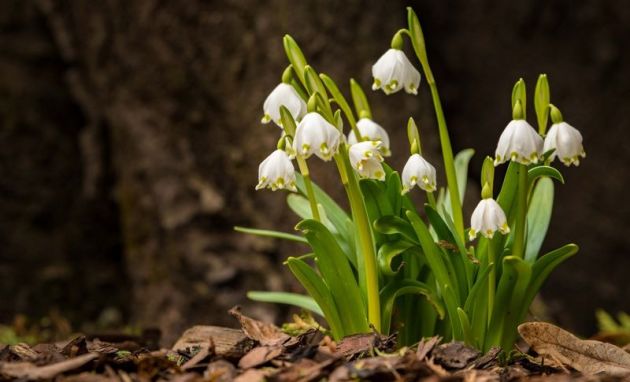
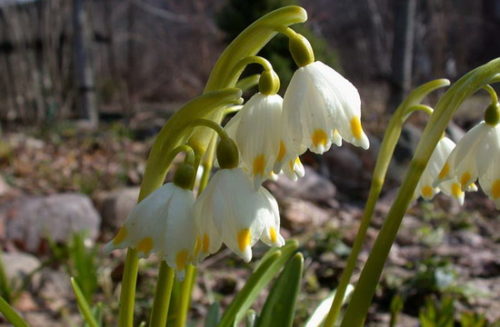
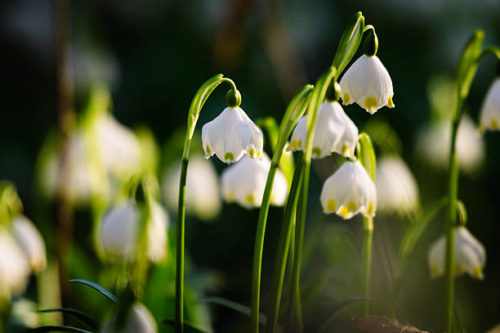
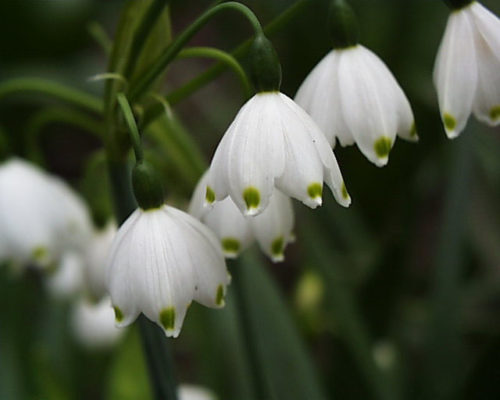
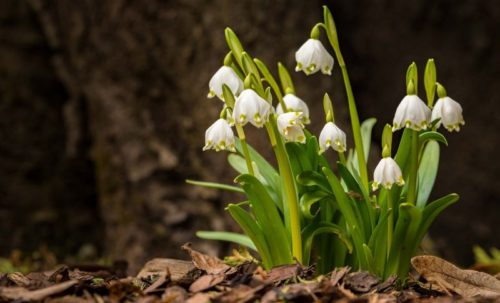

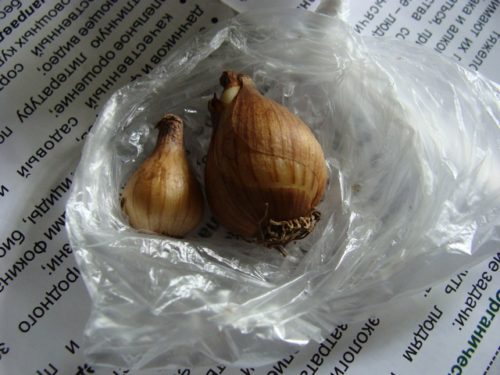



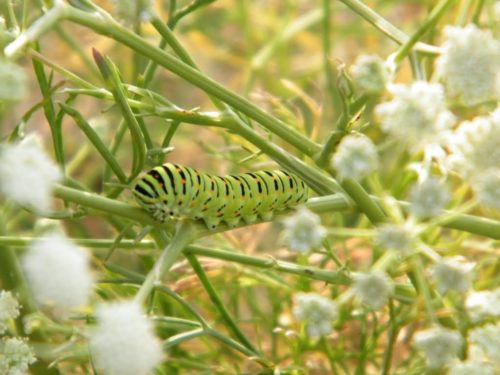
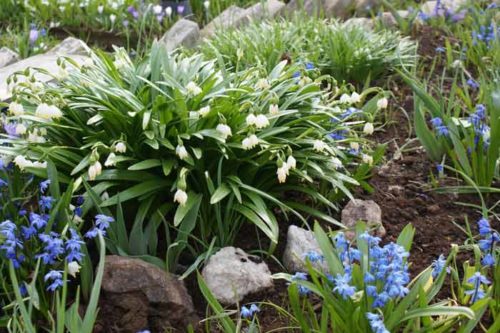
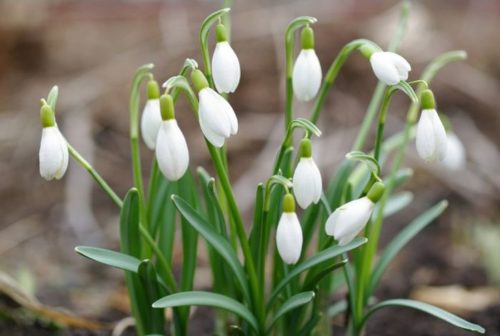
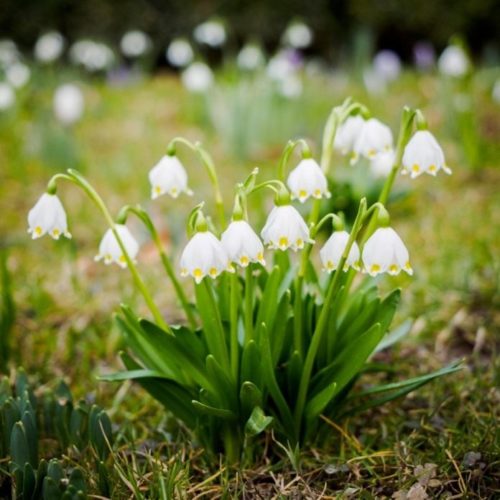












 Start a discussion ...
Start a discussion ...